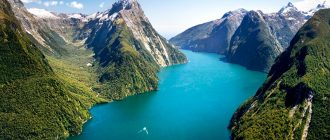Poland – the most detailed information about the country with a photo. Sights, cities of Poland, climate, geography, population and culture.
Contents
Poland (Rzeczpospolita Polska)
Poland is one of the largest states in Central Europe. The country is located between the Baltic Sea in the north, the Sudetes and Carpathians in the south, in the basin of the Vistula and Oder. Poland borders Belarus, the Czech Republic, Germany, Lithuania, Russia (Kaliningrad region), Slovakia and Ukraine. This is a country with a rich history and beautiful culture, ancient cities, picturesque landscapes and extraordinary historical sites. Despite all the evils that survived Poland in the 20th century, it restored its rich heritage, traditions and economics.
- Useful information
- Geography and nature
- Climate
- Best time to visit
- Story
- Administrative division
- Population
- Transport
- Cities of Poland
- sights
- Accommodation
- Kitchen
Useful information about Poland
- Population – 38.4 million people (36 place in world).
- Area – 312 679 square kilometers.
- The language is Polish.
- The currency is Polish zloty.
- Time – Central European UTC +1, in summer +2.
- Visa – Schengen.
- Poland is a catholic country. The Poles are very religious. Many main holidays – the church.
- Polish public holidays: New Year (December 31 and 1 January), Epiphany or the Feast of the Three Kings (January 6), Easter (by lunar calendar, usually March-April), Easter Monday, May Day (May 1), Constitution Day (May 3), Pentecost (the seventh Sunday after Easter), the Assumption of the Blessed Virgin Mary (15 August), All Saints Day (November 1), National Day Independence (November 11), Christmas (December 24-26).
- Poland is a safe country. So that nothing will cloud the trip – just follow the basic rules of behavior and security.
Geography and nature
Poland is located in the northeastern part of Central Europe and washed by the Baltic Sea. Most of the territory is located on plain. The Polish lowland occupies about 2/3 of the country’s territory. In the north is the Baltic ridge, in the south and southeast – Lesser Poland and Lublin Uplands, along the southern border stretch the largest mountains of Poland – the Carpathians and the Sudetes. The country is rich lakes and rivers. The largest rivers are the Oder and the Vistula. Forests occupy almost a third of the territory.
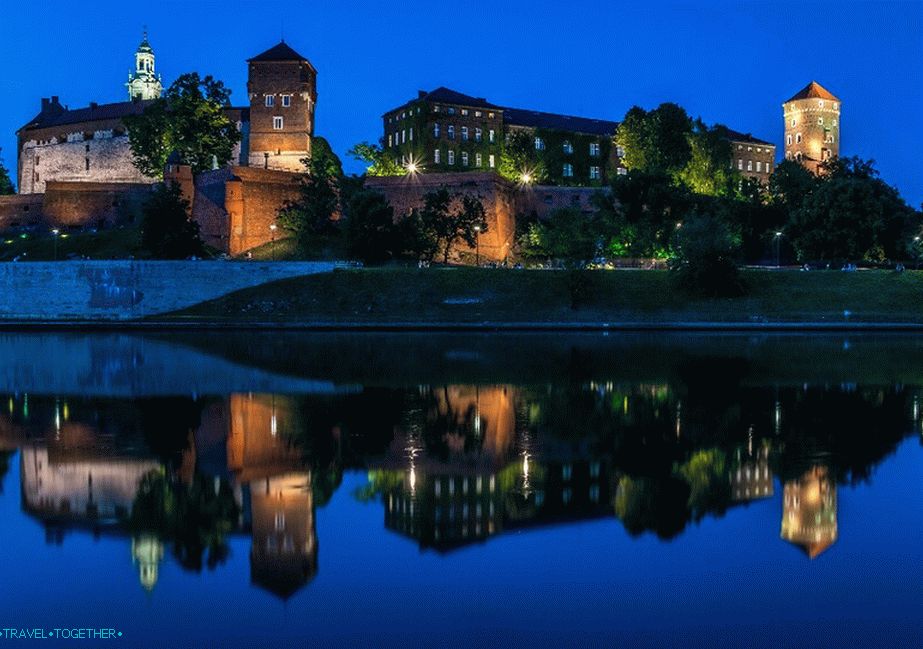 Vistula River in Krakow
Vistula River in Krakow
Climate
The climate is temperate, on the Baltic coast – sea. Winter soft enough with slight frosts and warm summers. The continentality of climate in Poland is felt much less than in neighboring Belarus and Ukraine. In eastern Poland, winter colder
 Winter in Malborka
Winter in Malborka
Best time to visit
The best time to visit Poland is May-September and the period Christmas holidays.
Story
At the beginning of our era, Germanic tribes lived in Poland. Then they were replaced by Goths. In the middle of the first millennium to these lands Slavs came: Western Glade (given the name of the country), Lendzyane (from the name of the tribe the word “lyakhi” originated), Kuyavians, Pomorians, Mazovshane, Vistlyane, Slazyane. Gradually on the basis of these tribes formed the principalities in the region of Krakow (Little Poland) and Poznan (Great Poland).
In 877, Little Poland was conquered by Moravia. Center Polish state became Great Poland. First ruler The state is considered Meshko I from the Piast dynasty. His son – Boleslaw the Brave, became the first king of Poland. With him, the state reached real power. He conquered Little Poland and even occupied Kiev. Meshko II later lost all his father’s conquests. The power of the Polish kingdom was revived during the reign of Boleslav Ii. After the death of Boleslav III in 1138, the feudal begins fragmentation. The principalities are formed: Kuyavia, Mazovia, Silesia, Pomorie.
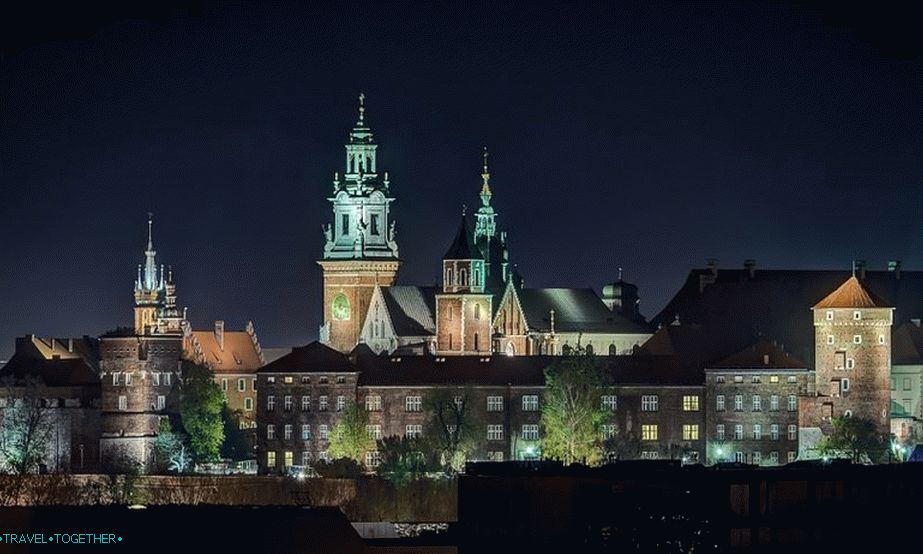 Krakow – ancient the capital of Poland
Krakow – ancient the capital of Poland
In the 12th century begins the German expansion to the east. Part The German Empire enters Pomorie. To fight the Germans, the Poles call for the Teutonic Order. In 1241, Polish troops were defeated by the Mongol Tatars. At the end of the 13th century, Premysl II took the title king, but was soon killed. In 1320, Prince Kuyavii Vladislav Loketek crowned himself in Krakow and transferred his capital there. In 1384 year became the Queen of Poland Jadwiga. As a result of her marriage with Lithuanian prince Jagiello arose a powerful Polish-Lithuanian state. In 1410, the Battle of Grunwald was defeated Warband.
In 1454, Poland became a republic led by the Sejm. AT The 16th century was interrupted by the Jagiellonian dynasty. In addition, Poland was drawn into the long Livonian war with Russia. As a result Union of Lublin, the state united with the Grand Duchy Lithuanian in the Polish-Lithuanian Commonwealth. The new state headed the Diet, who chose the king.
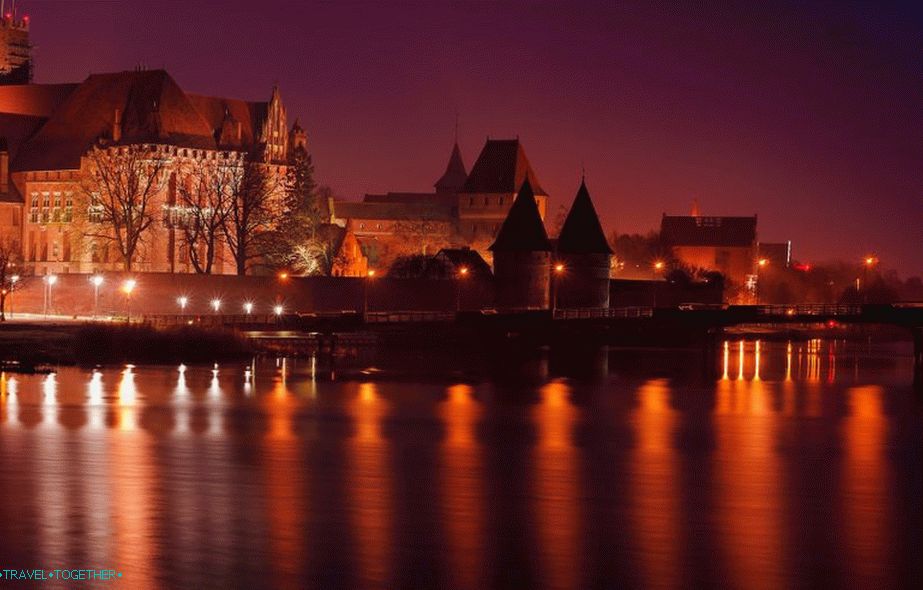 Marienburg – the largest teutonic castle in Europe
Marienburg – the largest teutonic castle in Europe
At the beginning of the 17th century, Polish-Lithuanian Commonwealth conducts an intervention in Russia. After a while, the decline of the Polish state begins. Poland lost several wars, and during the Northern War Warsaw occupied by the Swedes. In the second half of the 18th century, the country became a battlefield in Seven Years War. In 1772, the first partition of Poland took place between Prussia, Austria and Russia. The second and third sections have stopped the existence of an independent Polish state.
After the First War, the Polish Republic was proclaimed. The head of state was Jozef Pilsudski. September 1, 1939 at Poland was invaded by German troops. World War II swept across the land of firestorm, destroying the ancient cities and the huge part of the historical heritage, putting a few terrible pages in its a story. After the war, Poland becomes communist. In 1989 year there is a change in the political system. From now on Poland is a parliamentary republic.
Administrative division
Poland is divided into 16 provinces. The provinces are divided into districts, which, in turn, are divided into gminas.
Poland voivodships:
- Warmian-Mazury – Olsztyn.
- Wielkopolska – Poznan.
- West Pomerania – Szczecin.
- Kujawsko-Pomorskie – Bydgoszcz Torun.
- Lodz – Lodz.
- Lublin – Lublin.
- Lubuskie – Gorzów Wielkopolski and Zielona Góra.
- Masovian – Warsaw.
- Malopolska – Krakow.
- Lower Silesian – Wroclaw.
- Opole – Opole.
- Subcarpathian – Rzeszów.
- Podlaskie – Bialystok.
- Pomeranian – Gdansk.
- Swietokrzyskie – Kielce.
- Silesian – Katowice.
 Administrative division
Administrative division
Population
The population of Poland is about 40 million people. This is one of the largest European Union countries. The Polish Republic is a mono-national state. Almost 97% of the population are ethnic Poles. They speak in Polish, which belongs to the West Slavic group languages.
Poles are quite polite, patriotic, often very traditional and religious. They love to complain. Despite all the stereotypes, this friendly, thrifty and friendly people. Unfamiliar people in Poland are turning to each other on you. Men are called “pan”, and women “pani”. At the meeting, the men shake hands.
Transport
The country’s largest airport is located in the capital – Warsaw. Airports are also located in Krakow, Gdansk, Wroclaw, Poznan, Katowice, Rzeszow, Bydgoszcz, Lodz, Lublin. Flies to the country most European carriers.
Poland has rail connections with many European capitals: Moscow, Kiev, Berlin, Prague, Vienna, Budapest. There’s a lot international bus lines that connect to major Polish cities and most major European cities.
Highways link Poland with Germany and the Czech Republic. Roads Warsaw, Wroclaw, Gdansk, Krakow, Poznan, Lodz.
 Wroclaw
Wroclaw
Cities of Poland
The most interesting cities in Poland:
- Warsaw is the capital and largest city of Poland. Old city is a UNESCO World Heritage Site as a model restored historical heritage. Warsaw are museums culture and entertainment.
- Krakow is the cultural capital of Poland and probably the most beautiful city of the country. Its center is a World Heritage Site. UNESCO and is filled with old churches, historical and cultural monuments. Here is the largest medieval market square in Europe and the ancient residence of the Polish kings – Wawel Castle.
- Lodz – Polish Manchester. One of the centers of Polish The industry boasts 18-19 century architecture and the most the longest boulevard in Europe.
- Wroclaw is the capital of Silesia, a city of stunning beauty with rich history and picturesque historical center. Old Town is located on 12 islands. By the number of bridges, Wroclaw is second only Venice, Amsterdam and Hamburg.
- Poznan – an ancient city, which is considered the cradle of Polish people. The historic center is an amazing blend architecture of different eras.
- Gdansk is one of the most beautiful cities on the Baltic coast. The ancient trading port, which was a member of the Hanseatic union.
- Szczecin is one of the most important Polish ports with a huge harbor, full of buildings in gothic and modern styles, parks and museums.
- Bydgoszcz – an old commercial city with beautiful architecture 18-19 centuries and the picturesque quarter by the river Brda.
- Lublin is the capital of Eastern Poland. The ancient city with typical Polish architecture and compact historical center.
- Torun – one of the oldest cities in Poland, the birthplace of the great Copernicus, full of medieval gothic buildings.
- Malbork – a small town and the former capital of the Teutonic orders.
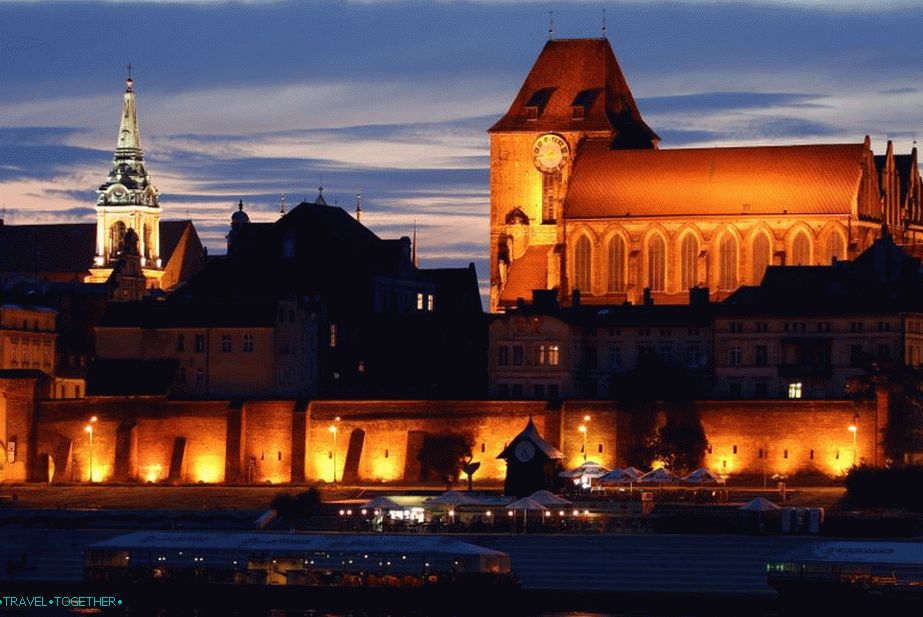 Torun
Torun
sights
Most of the main sights of Poland are medieval cores of ancient cities, historical and cultural monuments the same period. Number of UNESCO World Heritage sites – 15. Many sights have suffered significantly during World War II or even been completely destroyed.
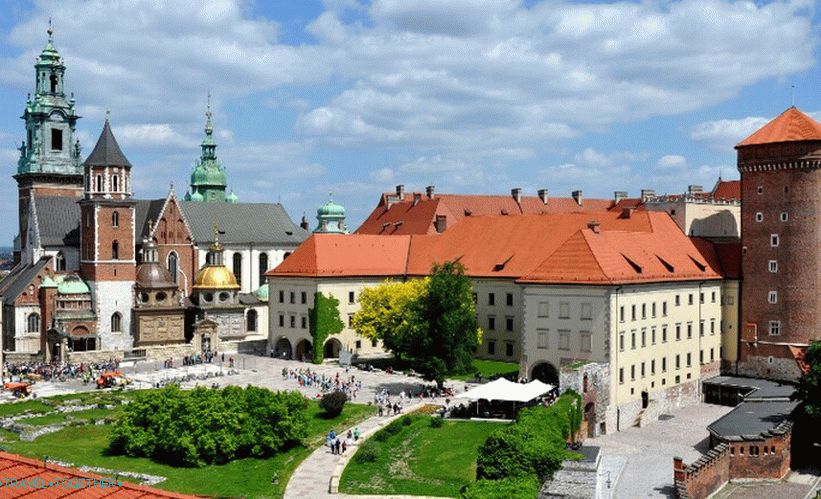 Krakow Wawel
Krakow Wawel
The most interesting tourist city in Poland is Krakow. It is ancient the capital of the Polish kingdom, whose legacy has survived in the furnace World War II. The historical center of Krakow is an object UNESCO. Its main attraction is Wawel – royal castle on the hill. This is a complex of medieval buildings, which for several centuries were the political center Poland.
 St. Mary’s Church Krakow
St. Mary’s Church Krakow
Be sure to visit the main market – the largest market square in Europe. On it is the St. Mary’s Church – one of most beautiful gothic cathedrals of Poland, many historical buildings with a wide variety of architecture.
 Salt Mine Wieliczka
Salt Mine Wieliczka
Wieliczka – an ancient salt mine, which was operated on over 700 years. This is one of the most famous. sights of Poland. It is a mysterious a maze of 300 kilometers of halls and corridors carved into a clean salt (the deepest layers of the mine are located at a depth of 372 meters underground). Trips show only a short stretch, comprising a salt lake, caves and a beautiful chapel.
 Auschwitz
Auschwitz
Auschwitz – the largest concentration camp of the Nazis, witness a huge evil and pain. This terrible and tragic place reminds all people of the horrors of World War II. Auschwitz is located in a small town near Krakow.
 Tumsky Island (Wroclaw)
Tumsky Island (Wroclaw)
Wroclaw has a huge old town located on several islands that connects more than 100 bridges. Historical Center impresses with its fullness of Gothic, Baroque and modernity.
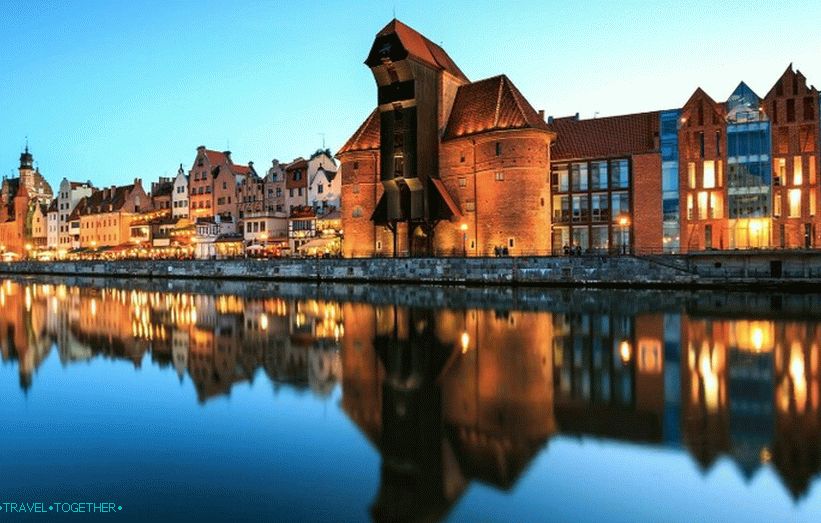 Gdansk
Gdansk
The old town of Gdansk – the sea capital of Poland, impresses with its size, architecture and atmosphere. Here is the most The largest brick gothic church in the world.
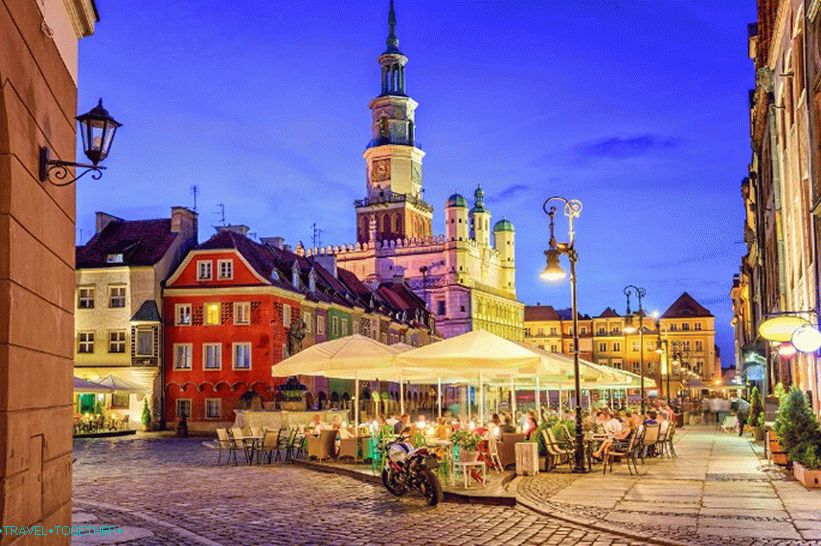 Old town in Poznan
Old town in Poznan
The old town of one of the oldest cities in Poland – Poznan, famous for its ancient architecture, market square and historical churches.
 Torun
Torun
Torun is often called the “Krakow of the North”. Medieval historical center is listed as a World Heritage Site UNESCO.
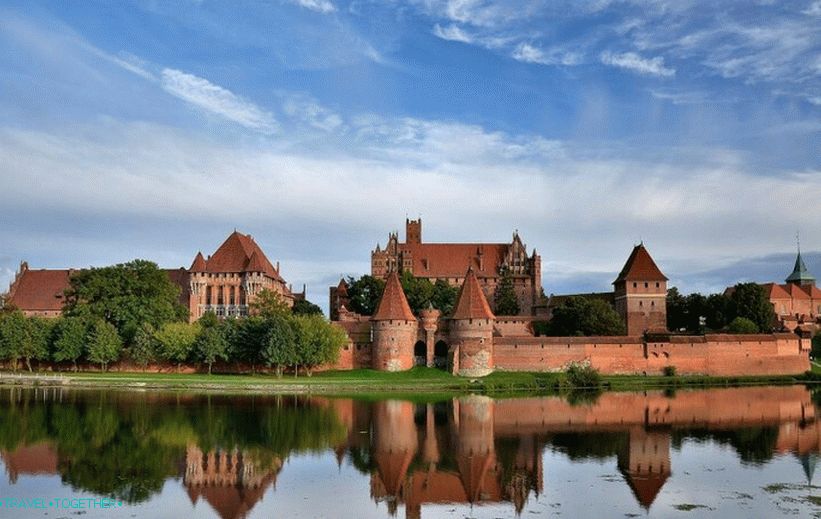 Teutonic castle in Malbork
Teutonic castle in Malbork
In the small town of Malbork in the Middle Ages was located the capital of the Teutonic Order. Knights built here impressive the red brick castle which is the biggest Gothic fortress in Europe.
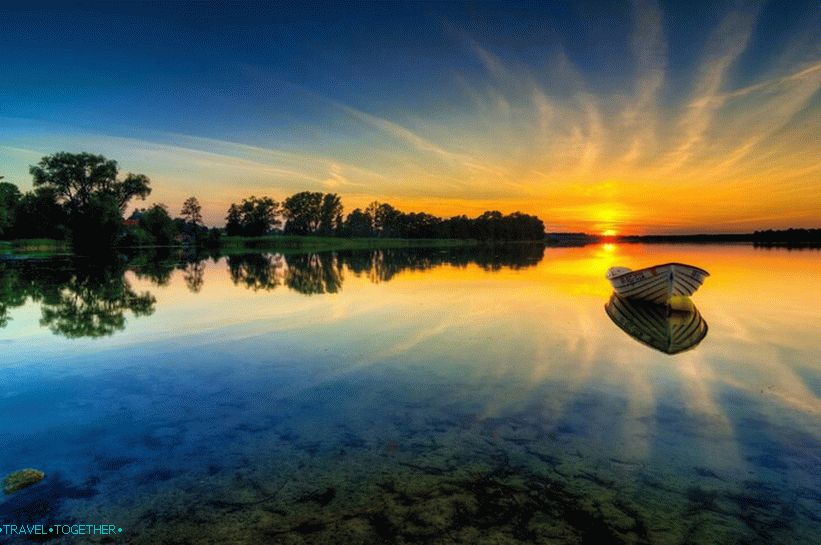 Mazury Lakes
Mazury Lakes
Mazury Lakes – more than 3000 picturesque lakes. Paradise for lovers nature and water sports.
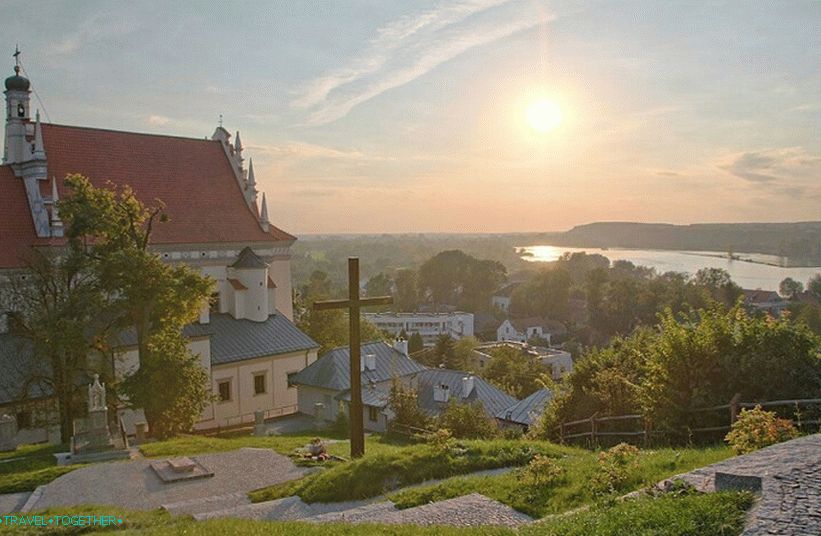 Kazimierz Dolny
Kazimierz Dolny
Kazimierz Dolny – the most famous of the small Polish cities with the historical center of the Renaissance, the ruins of the romantic castle, baroque church.
 Czestochowa
Czestochowa
Czestochowa is located in the heart of Krakow-Czestochowa hills in the region with picturesque Jurassic rocks. For Most Poles are an important place of pilgrimage.
 Zamost
Zamost
Zamosc is a small town in Eastern Poland known for its historic center in the Renaissance style.
Accommodation
Prices for hotels in Poland recently close to Central European, especially popular tourist centers. The country’s tourist infrastructure is constantly evolving. In most cities, finding accommodation is not a problem if you do it. in advance.
Kitchen
Traditional Polish cuisine is simple, rich in meat, sauces and vegetables. The Poles are very fond of pickled vegetables and cabbage salad. Among the soups, barzcz czerwony (borsch), zupa ogórkowa or grzybowa (cucumber or mushroom soup), żurek (rye soup, which is usually served with sausage and egg), kapuśniak (similar to soup). Other traditional dishes: pies (our dumplings), bigos (stew with vegetables), jabłecznik (apple pie). In Poland You can buy excellent traditional products: sausage, cheese, baking





